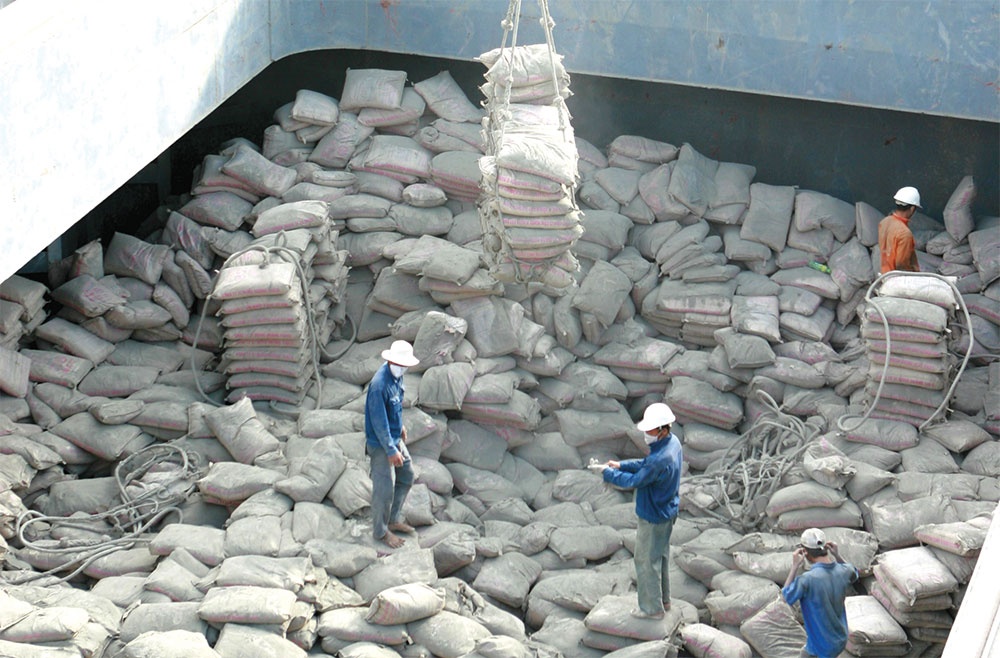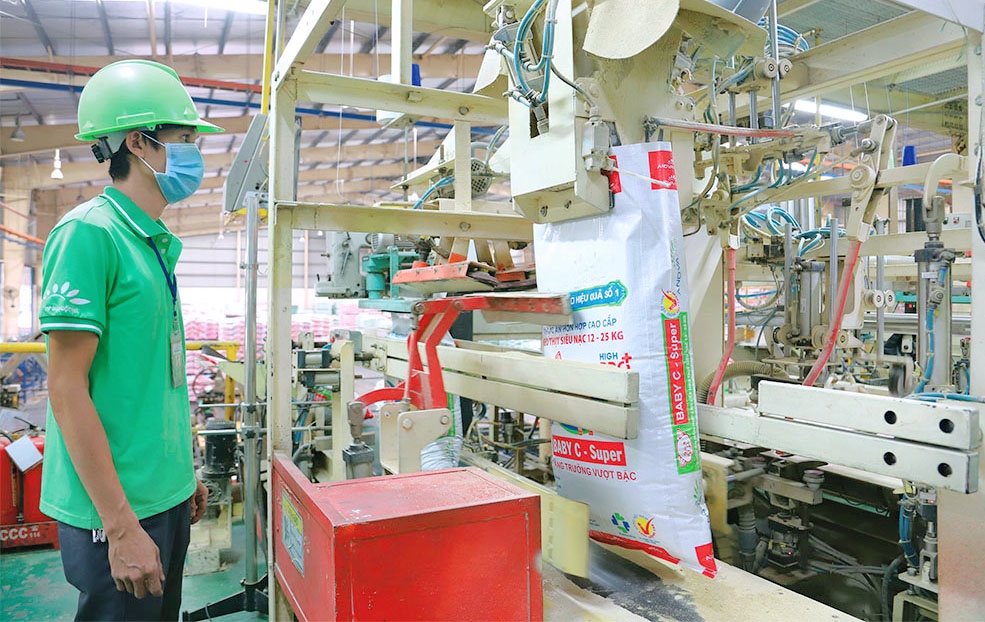Hopes for advances in building materials
Hopes for advances in building materials
The building material sector suffered from a bleak 2023 with a dip in both production output and profits, and the situation is expected to drag on in 2024.

The Ministry of Construction last week released the 2023 production and business report, in which the building materials sector, particularly the cement industry, rendered a quite disappointed picture.
Cement production was estimated at 89.4 million tonnes, down 5.45 per cent on-year, and consumption fell to around 89 tonnes, down 6 per cent on-year.
Around 57 million tonnes were sold in the domestic market, showing a 10 per cent fall, while export of cement and clinker came to 32.6 million tonnes, slightly up by 2 per cent on-year. The export value, however, shed by more than 10 per cent to just $1.23 billion in 2023.
The domestic market has been the main consumer of the cement sector, each year snapping up 62-65 million tonnes of products over the past five years. This year, the figure sank below the 60 million-tonne benchmark.
Consumption of the cement sector had shed 15 million tonnes on-year in 2022 compared to 2021, making the 2023 picture even more critical.
The director of one cement business with a system of cement plants in the provinces of Ninh Binh, Ha Nam, and Nghe An revealed that the company’s business has been so bleak, they have had to halt several production lines to mitigate losses.
Meanwhile, state-owned Vietnam Cement Industry Corporation (Vicem), reported that by the end of the third quarter, many of its 10 member units have counted losses.
In the first nine months of this year, Vicem Ha Tien, the largest unit in the system, reported $222 million in the revenue, down more than 20 per cent on-year. Its profit contracted $1.5 million, whereas the company counted $8.5 million in the same period last year.
Amid slow consumption, Vicem Hoang Mai, another key member, had to halt its kiln operations for a month and reduce clinker production in Q3 to avoid rising inventory. In the first three quarters of 2023, the company incurred $1.09 million in losses.
Many cement plants have had to halted operation to downsize inventory in the past year. As of now, nearly 10 cement production lines reportedly sit idle across the country.
Meanwhile, the production output in 2023 for facing tiles and slabs was estimated at 386.5 million square metres, down 15 per cent on-year, and consumption fetched around 291.5 million sq.m, taking a 25 per cent dip on-year.
Similarly, ceramic plumbing fixture production output approximated 12.5 million items, down 25 per cent on-year, and consumption was around 11 million items. Construction glass output reached 211 million sq.m, slightly down by 2 per cent on-year, and consumption approximated 168 million sq.m.
The Ministry of Construction (MoC) assumes that the poor performance came in the context that many construction projects saw delays in implementation, and input cost saw a spike.
According to an MoC report, by the end of Q3 in 2023, supply of real estate items was stressed in all segments. The commercial housing segment saw the completion of 42 projects with almost 16,000 apartments, equal to nearly half compared to one year ago. Resort property and office-residential complexes saw the completion of 17 projects, equal to 57 per cent compared to a year ago.
Firms say that the way out for the building materials industry in 2024 is public investment disbursement acceleration as a driving force for economic growth, with many key transport infrastructure projects being implemented.
Vicem CEO Le Nam Khanh said, “As the cement industry is still in the stage of oversupply, and consumption in both domestic and export markets see no positive factors, 2024 is forecast to be another tough year for the cement industry. For the porcelain segment, due to huge production capacity and curtailed consumption since 2021, the segment runs at just 60 per cent of its designed capacity.”
Dinh Xuan Huy, chairman of the Vietnam Construction Ceramics Association, noted, “A frozen real estate market, firms lacking capital, lending rates fetching high, and high taxes compared to actual conditions have resulted in a stagnant building materials market. Unless these impediments are solved, a significant number of porcelain firms will go bust.”
In this context, eight business associations in the construction sector have been crying for help to the government.
In December, the MoC sought comments from the ministries of finance as well as industry and trade, along with the State Bank of Vietnam (SBV), about solutions to help firms in the building materials industry for submission to the government.
The MoC also asked the Ministry of Transport to command project developers to increase the use of reinforced viaducts at highway projects in the design stage, particularly in areas prone to floods and with weak soil, as well as those lacking materials for building roads, such as in the Mekong Delta region.
The MoC, the SBV, and localities shall continue expediting $5.06 billion of a preferential credit package for the development of social housing, workers’ residential blocks, and renovating old-style residential complexes.
The ministry also proposes reducing the clinker export tax rate to zero until the end of 2025; cutting lending rates by up to 2 per cent for businesses producing building materials in the same timeframe; and extending the deadline on charging no interest on overdue debts and restructured loans to reduce difficulties for businesses.
According to the MoC report, total production and business value of firms under its management reached an estimated $2.4 billion, equal to 85 per cent compared to one year ago, and 88 per cent of the full-year projection.
























